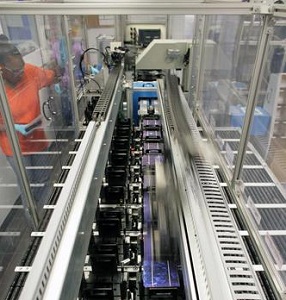Skepticism over White House solar projections
 On Aug. 24, among the fervor of the 2010 election season and wide-spread frustration over the continued economic stagnation, the White House issued a report touting the 2009 stimulus package and its impacts on the economy. Among areas focused on in “The Recovery Act: Transforming the American Economy Through Innovation,” are investments in renewable energy. While the White House can point to significant investments in solar and wind, the Associated Press contended that overall the report was full of “rosy projections.”
On Aug. 24, among the fervor of the 2010 election season and wide-spread frustration over the continued economic stagnation, the White House issued a report touting the 2009 stimulus package and its impacts on the economy. Among areas focused on in “The Recovery Act: Transforming the American Economy Through Innovation,” are investments in renewable energy. While the White House can point to significant investments in solar and wind, the Associated Press contended that overall the report was full of “rosy projections.”
The report stated that $100 billion of the $787 billion American Recovery and Reinvestment Act was invested in changing the United States’ energy economy. The report said funds from the stimulus have “supported more than 200 megawatts (MW) of solar projects that are already delivering solar power to consumers.” The report contended that stimulus spending in solar will spur increases in domestic manufacturing capacity for photovoltaic (PV) modules. As of 2008, the country produced one gigawatt (GW) of PV annually, but the report predicted 4 GWs of annual PV production by 2012, which would raise the country’s share of the global PV market to 14 percent by 2012.
The report also credits the Department of Energy’s Recovery Act funded pre-incubator and incubator programs with “supporting breakthroughs in nanomaterials and organic materials.” The research could make the cost of solar power “cheaper than electricity from the grid,” the report contended, projecting costs of PV falling from roughly $0.20 per kilowatt hour to $0.10/kWh. “If breakthroughs in technology can bring costs down to $0.06/kWh by 2030, solar power will be cheaper than retail electricity from the grid, even without government incentives,” the report asserted.
AP contended that the Recovery Act amounts to a “one-time jolt” to the industry, and “makes it difficult to project that the growth will continue for the next couple of years.” Robert Nelson, a partner at the Akin Gump law firm specializing in energy development, told AP that the halving of the cost of solar was “‘highly unlikely,’ unless there is a big increase in utility-scale solar power projects.”
But that seems to be precisely what’s happening in California already. The amount of projects up for approval there is equal to more than four times the total solar energy generation in the United States, which should increase manufacturing while bringing down the costs of solar.



